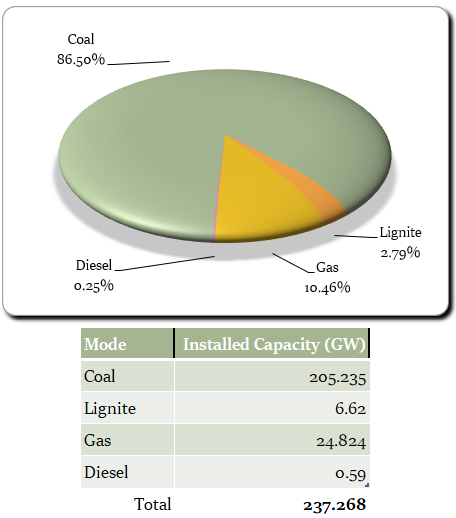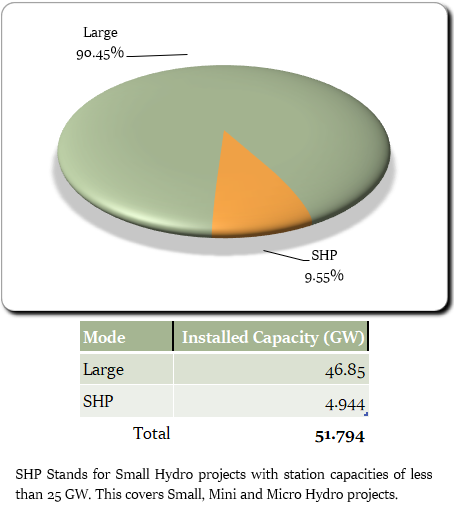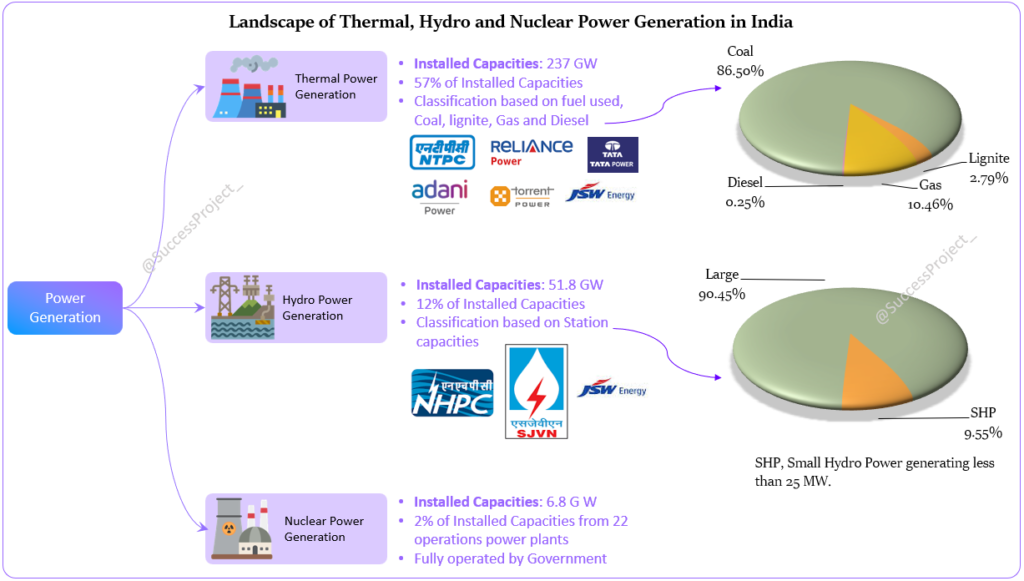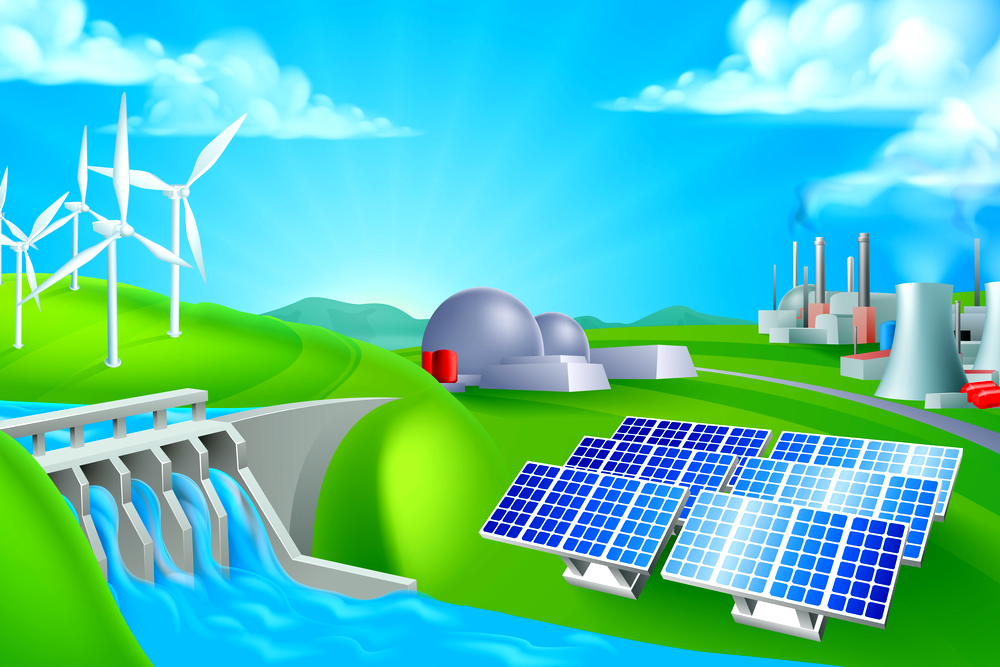Welcome to this engaging blog on Thermal, Hydro, and Nuclear Power Generation – the driving force behind India’s energy landscape. As stock investors, it is vital to comprehend the dynamics of these pivotal sectors to make well-informed investment choices. Thermal power plants, utilizing coal and natural gas, maintain their dominance in India’s energy mix, while hydropower taps into the power of flowing water, and nuclear power capitalizes on controlled nuclear reactions.
This blog will meticulously examine the installed capacities, challenges, opportunities, and future prospects of these power generation sources, equipping you with invaluable insights into potential investment avenues. Do delve into the fascinating world of Thermal, Hydro, and Nuclear Power Generation in India.
Hi, This is Venkatesh. I write on Personal Finance, Stock Investing, Productivity and Time Management. You will be interested to read more about me and the purpose of my website.
If you are interested in these topics do subscribe to my blogs. You would maximum receive 4 to 5 emails a month.
Thermal Power Generation
Thermal energy is the major (57%, little more than half) source of power generated in India. Check my earlier blog Watts to Wealth: India’s Power Generation, on the data on the Installed Capacity in India.
How Power is Generated
The power generation industry actively produces electrical power, serving as the foundation of the power sector by utilizing power plants to generate electricity. In India, power generation is an unlicensed activity, with the exception of atomic energy production, which necessitates a mandatory license.
Classification
There are two types of classification
- Classification based on type of fuel used
- Classifications based on the steam pressure and temperature levels used during power generation as sub, super and ultra critical power plants
Types of Fuel
Thermal power plants are classified based on the kind of fuel used,
- Coal based plants
- Lignite based plants
- Gas based plants
- Diesel based plants
India’s total installed capacity is predominantly dominated by coal-based capacities, owing to the abundance of large coal reserves within the country.
In the case of thermal power plants, they require continuous operation to meet the electricity demand. This is because it takes time (Usually hours) for them to fire up and reach the necessary heat level for generating electricity. However, it is worth noting that Gas-fired power plants have the advantage of quick start-up times. They can be fired up and operational within just few minutes (less than a hour), making them a crucial component in meeting peak demand scenarios. This flexibility in response is particularly valuable in situations where there is variability in daily demand.

Difference between coal and lignite
The key distinction between coal and lignite lies in their carbon content and energy characteristics.
- Coal, with its higher carbon content ranging from 45% to 86%, possesses a greater energy density.
- In contrast, lignite exhibits a lower carbon content, typically falling within the range of 25% to 35%.
However, despite its lower carbon content, lignite holds advantages in specific regions due to its abundant availability and lower cost compared to coal. As a result, lignite is utilized for power generation in these areas. Neyveli, Tamil Nadu, serves as an example where lignite is abundant, leading to the establishment of lignite-based power stations by NLC India Limited (Formerly Neyveli Lignite Corporation).
Subcritical, Supercritical and Ultra-Supercritial Power Plants
Subcritical Power Plants
These are conventional thermal power plants that operate at lower steam pressure and temperature levels. These power plants have lower efficiency compared to supercritical and ultra-supercritical plants, resulting in higher fuel consumption and greenhouse gas emissions.
Supercritial Power Plants
They operate at higher steam pressure and temperature levels than subcritical plants. They have lower fuel (coal) consumption and reduced emissions compared to subcritical plants.
Ultra-Supercritical Power Plants
These are advanced versions of Supercritical Power Plants operating at even higher steam pressure and temperature levels. They utilize advanced materials and technologies to withstand higher operating conditions.
The power Supercritical Power Plants and Ultra-Supercritical Power Plants plants contribute to cleaner and more sustainable power generation, helping to meet environmental regulations and goals.
Challenges for Thermal Power Generation
- Heavy Investment: Thermal power plants need huge investment.
- Shortage of fuels: The availability and price of fossil fuels, such as coal and natural gas, can fluctuate, affecting the operational costs and profitability of thermal power plants.
- Environmental concerns: Coal-based thermal stations, releases greenhouse gases and pollutants into the atmosphere, contributing to air pollution and climate change. This has increased the focus on renewable energy sources. Thermal power plants need to adapt cleaner energy solutions to stay relevant in the evolving energy landscape.
- Barriers to entry: Need of huge capital long gestation period and regulatory hurdles
- Aging Infrastructure: Many thermal power plants in India have been operating for several decades, leading to ageing infrastructure and equipment. This can result in decreased efficiency, higher maintenance costs. However this also provides opportunities in the form of modernization and upgrades to meet current environmental and regulatory requirements.
Hydro Power Generation
How Power is Generated
These power plants uses the energy of water in motion to generate electricity. The water is stored in a dam. When the gateways in the dam are open, water flows out. This flowing water has energy which is used to turn the blades of turbine and generate electricity.
Classification
The Hydel power plants are classified based on station capacities as,
- Micro Hydro, Upto 100 kW
- Mini Hydro, 101 – 2000 kW
- Small Hydro, 2001 – 25000 kW
- Large Hydro, > 25000 kW
The responsibility for Large hydro projects in India lies with the Ministry of Power, Government of India. On the other hand, the Ministry of New and Renewable Energy is tasked with overseeing the subject of small hydropower projects, specifically those with a capacity of up to 25 MW.
Reference for the above classification: Energy Development Company Limited, Annual Report 2022.
Reference for the data in Pie: Mar 2023, Installed Capacities report from CEA Website.

Statistics
- Hydro power accounts for approximately 12% of the country’s total installed capacity.
- As on May 2023, the total installed capacity of Hydro powerplant is around 51.8 GW.
- India’s first Hydro Powerplant was built at Darjeeling in 1897.
Challenges in Hydro Power Generation
Dependence on Water Availability
- The availability of water in the dam directly determines the generation of electricity.
- During periods of drought, when there is no water, power generation is impacted as there is no source to drive the turbines.
- This significantly affects the reliability and consistency of hydropower generation, as it relies entirely on the presence of water to produce electricity.
Huge investment and Long payback period
- Constructing hydropower plants involves making substantial upfront investments, including the building of dams, powerhouses, and transmission infrastructure.
- These projects require significant financial resources to be allocated.
- Furthermore, the payback period for hydropower ventures is frequently longer when compared to other types of power generation, presenting financial challenges for investors and developers.
- It may take a considerable amount of time for the revenue generated from the power plant to offset the initial investment and operational costs.
Nuclear Power Generation
How Power is Generated
Nuclear power plants actively utilize the process of nuclear fission to generate electricity. Through nuclear fission, atoms undergo splitting, resulting in the release of substantial heat. This heat, in turn, is employed to convert water into steam. The steam propels the turbine blades, generating electricity. Within the nuclear power plant, this intricate nuclear fission process occurs within the reactor, which employs Uranium as its fuel source.
Statistics
- Nuclear power accounts for approximately 2% of the country’s total installed capacity.
- India has 22 operational nuclear power plants, which collectively provide an installed capacity of 6,780 MW.
- Tarapur Atomic Power Station (TAPS), India’s first nuclear power plant, started operations in 1969.
Indian Scenario
India’s nuclear power industry is overseen by the Nuclear Power Corporation of India Limited (NPCIL), a government-owned entity. NCPIL is entirely tasked with constructing, operating, and maintaining nuclear power plants in the country. There is no private participation and thus not much (direct) scope for equity investors in this industry.
Challenges in Nuclear Power Generation
Safety Concerns
There are potential risks associated with nuclear accidents, such as meltdowns or radioactive leaks.
Waste Management
The radioactive materials used in nuclear power plants pose a significant challenge in terms of waste management. These materials remain hazardous for hundreds of years, requiring careful handling, secure storage, and effective disposal methods to prevent environmental contamination. Thus, nuclear needs to be maintained for many years beyond the life time of the nuclear power plant.
Limited Resource Availability
Nuclear power relies on finite resources like uranium or plutonium as fuel. At some point in time, these could become exhausted, unless alternate fuels are discovered.
Society Perception
Due to dangers of nuclear energy, the world wants to move out from nuclear based power generation towards environment friends means of power generation.
Insights for Investors
- The Thermal mode of Power Generation takes the lion’s share, contributing 57% (slightly over half) of the total installed capacities.
- Hydro Power generation has a share of 12% contribution, while Nuclear power contributes only 2%.
- Nuclear power generation is fully controlled by the Government, limiting opportunities for equity investors.
- However, within the Thermal Power Generation sector, Coal-based power generation dominates, thanks to the abundant coal reserves in the country.
- Considering the growing environmental concerns surrounding Thermal Power plants, there will be a greater push towards Renewable-based power sources in the future. This shift opens up more opportunities for equity investors. In the upcoming blog, we will delve deeper into the world of renewable power generation.
- Each of the modes of Power Generation has its own challenge, the predominant ones being: Environmental and Fuel Shortage for Thermal Power Plants and Water availability for Hydro Power Plants.

The image below brings out the landscape of Thermal, Hydro and Nuclear power generation in India.

Reference: The Power Plant icons in the above image were sourced from https://www.flaticon.com
Conclusion
In conclusion, this comprehensive blog on Thermal, Hydro, and Nuclear Power Generation has provided stock investors with valuable industry knowledge. We have explored the key aspects of these power generation sectors, including installed capacities and challenges. As an investor, understanding the dynamics of these sectors is crucial for making informed decisions. The thermal power industry, with its dominance fueled by coal and natural gas, presents stable investment prospects. Hydropower offers the advantage of renewable energy harnessed from flowing water. By delving into the intricacies of these sectors, investors can identify potential opportunities and contribute to India’s energy landscape while reaping financial rewards.
In the next blog, we will see the other modes of Power Generation.
Hope you found this blog useful. Do share my blogs with your friends, peers and fellow investors.

